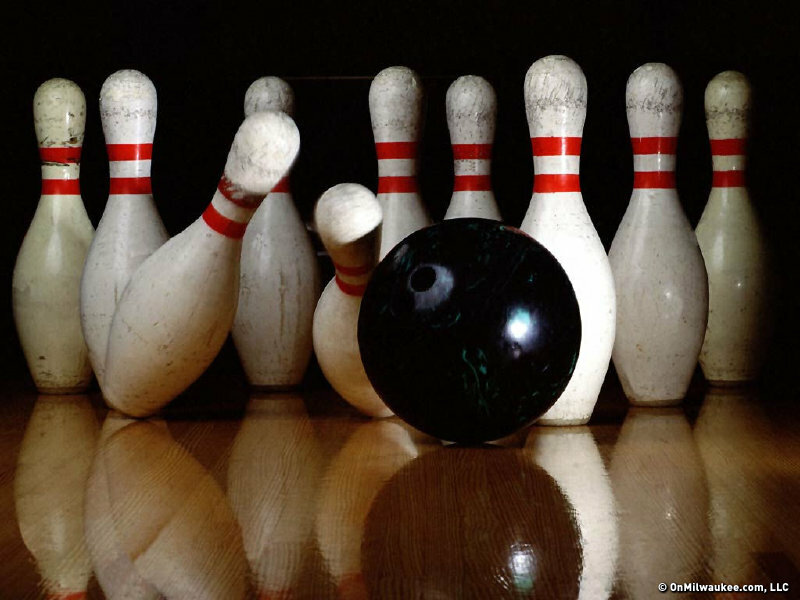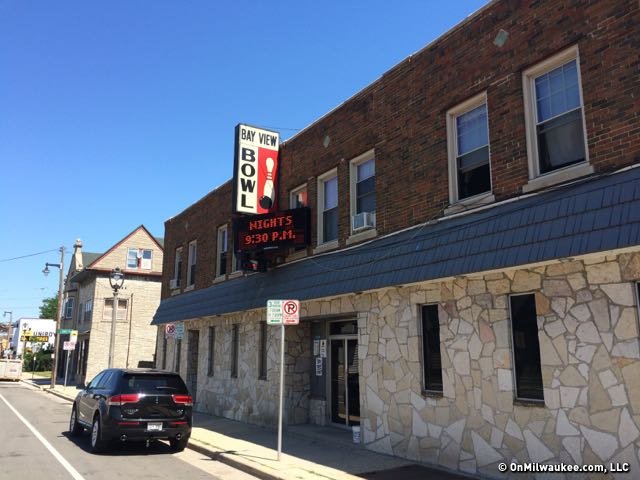You've heard them all before. When your friends from out of town think of Milwaukee, they think of lots of things: Fonzie, bowling, beer and brats ... you know, the stereotypes you really wish would go away.
Some stereotypes, of course, are based in reality. But others just aren't true. Here are a few perceptions of Milwaukee, and whether they hold a shred of truth in 2006. Please add -- and debunk -- your own using the Talkback feature below.
Milwaukee as Fonzie-land
If you've ever stepped over the state line you've heard the "Happy Days" and "Laverne and Shirley" comments after answering the question, "Where are you from?" We asked an Italian what the name Milwaukee conjured, and the response was no surprise.
"I watched a ton of great American TV shows," recalls Federico Cane, who lives in Cerrina Monferrato. "Maybe some of these were shot in Milwaukee but certainly my favorite was 'Happy Days.' Every episode was unforgettable, even the beginning with the signature Bill Haley song. As kids, we tried to be like (the characters), but it wasn't easy, it took a lot of fantasizing and a willingness to dream. Also 'Laverne and Shirley,' which I miss a lot."
Does Cane think that Italians believed these TV shows were actually filmed in the cities they were meant to depict?
"They could have told me they were all shot at a studio like (Rome's famous) Cinecitta' and it would have been the same," he says. "I never thought about it. It was never very clear, but I was content anyway."
Of course, neither show was filmed in Milwaukee nor featured Milwaukee actors.
On "Happy Days," Arnold's drive-in was loosely based on a number of Milwaukee businesses frequented by one of the show's writers, who grew up here, but other than the occasional mention of Whitefish Bay, there was little "Milwaukee" in the show.
Laverne and Shirley lived on the real-life Knapp Street and worked at Shotz Brewery, which was a take on Schlitz, of course, but, again, the show appeared to have little that specifically represented Milwaukee.
Brew City in the 1950s would have rocked to the same music and worn the clothes seen in the shows, but that's true of any American city of the day.
Incidentally, Milwaukeeans will likely be unsurprised by the two other things that come to Cane's mind when he hears the word "Milwaukee."
"The second thing is Harley-Davidson," he says, "the dream of anyone who wants to travel not to get somewhere but for the pleasure of the ride. The third thing is the story of the Milwaukee monster (Jeffrey Dahmer), the unforgettable images of which we saw on the TV news."
Milaukee's big bellies are from beer
Go to any festival or sporting event in Milwaukee, and you'll see quite a few "beer bellies" -- hopefully covered by a shirt and not just hangin' in the breeze. However, there is debate over whether or not the "beer belly" -- a human trait that features an overhang of fat above the waist with little or no fat on the rest of the body -- is a physical reality or not.
Dr. Meir Stampfer of Harvard School of Public Health is a leading authority on alcohol and health and says, "Though it's often called a 'beer belly,' beer does not promote weight gain any more than any other source of calories."
Milwaukee surgeon Dr. Paul W. Loewenstein agrees. He says that drinking beer alone will not give you a beer belly -- also referred to as a "beer gut" - but because beer is high in carbohydrate calories, if someone drinks a lot of it and doesn't burn off the calories, they could indeed develop what appears to be a beer belly.
Also, many beer drinkers consume high-fat snacks like potato chips, and are more likely to consume fast food, which is arguably the leading factor in obesity.
Loewenstein says that males are more likely to develop the beer belly than women, who have a tendency to store fat in other places.
"Since males tend to accumulate their fat inside the abdomen as opposed to females who tend to accumulate it in their hips and thighs and abdominal wall, they get a beer belly," he says.
Also, after many years of excessive drinking, people tend to get cirrhosis of the liver, which results in a fatty, enlarged liver, and ascites, which is fluid build-up inside the abdomen.
"They would thus display a beer belly," says Loewenstein. "Think David Crosby."
However, a few years ago, Pasquale Strazzullo of the University of Naples worked with a team of scientists and came to the conclusion there was a "beer belly gene." He found a genetic variant known as "DD" which is linked to developing fat around the stomach, and discovered through studies that men with the "DD" gene were more likely to develop beer bellies as they grew older, depending on what they ate and drank and whether or not they exercised.
Is plastic surgery an option for someone with a beer belly? Loewenstein, who is president of Greater Milwaukee Plastic Surgeons, says no.
"There is not much plastic surgery can offer to someone with a true beer belly," he says.
Milwaukee needs a slogan
When it comes to city slogans, there are really only three that connect: "Big Apple," "Windy City," and Denver's "Mile High City." And, in realty, these three aren't slogans as much as they are phrases or second names for New York, Chicago and Denver.
As for Milwaukee, we've seen "Great Place on the Great Lake" and "Genuine American" get kicked to the curb after neither ever really gained momentum. Fact is, slogans don't sell unless they have massive amounts of money or huge promotional efforts (see massive amounts of money) behind them.
Milwaukee's current image campaign skips the slogan entirely. In fact, many city slogans seem pointless, forgettable and do little to attract new business or visitors. Case in point, how many cities use "Rich Past, Vibrant Future" or "Moving forward?" Lame.
According to Visit Milwaukee's David Fantle, it's all about a city's marquee building. "In our own 'scientific' research we quickly discovered that people rarely identify a slogan with a city. That's not the case with symbols or landmarks," says Fantle.
"When you see the Empire State Building you immediately think New York City. Same can be said with the Golden Gate Bridge -- San Francisco. Not only are we skipping the slogan, but the Milwaukee campaign, incorporating our own architectural landmark, the Santiago Calatrava-designed addition to the Milwaukee Art Museum, is being used to attract tourists, workers, businesses and students to the city," Fantle says.
"Milwaukee is making the leap by securing total community-wide support for our symbol, but leaving behind any attempt to roll out some tired new slogan," says Dean Amhaus, president of Spirit of Milwaukee.
Milwaukee is Fat City
Milwaukee is always accused of being a city full of fatties, and it's no wonder, thanks to businesses with names like Fat Daddy's, Fat Boy Roadhouse and Bella's Fat Cat.
Sure, we like our beer and brats, but the belief that we're porkier than other parts of the planet is a pile of beans. Earlier this year, in fact, Men's Health Magazine declared Milwaukee the fifth most fit city in the country -- and Chicago as the place with the pudgiest people of all!
Granted, the magazine used different factors this year to rank their list; no longer were tallies based on poundage alone, rather the magazine took into account weather, availability of bike trails and lanes, and the use of exercise gyms into their factoring. Hence, Milwaukee is not the piggy city it was, and still is, believed to be.
Now, if someone would just tell Homer Simpson this -- who after getting Springfield into the record book as the world's fattest city yelled, "In your face, Milwaukee!"
Milwaukee is a bowling mecca
Everyone knows that Milwaukeeans like to bowl, but kegling isn't as popular in Brew City as you might believe.
"Yes, Milwaukee remains a big bowling town, although like all other big cities, not as big as it used to be," says Mark Miller from the United States Bowling Congress.
Miller says Milwaukee County has 38 bowling centers with 668 lanes, but that's down about 30 alleys from its peak 30 years ago.
"But this is a trend that's happened nationwide due to real estate and other societal factors, and not because of a decline in bowling," says Miller.
Perhaps the other reason Milwaukee is perceived as a bowling city is because the USBC is based in Greendale. Formerly housing the American Bowling Congress, the national headquarters for the governing body of the sport has been in its present location across from Southridge Mall since 1972.







